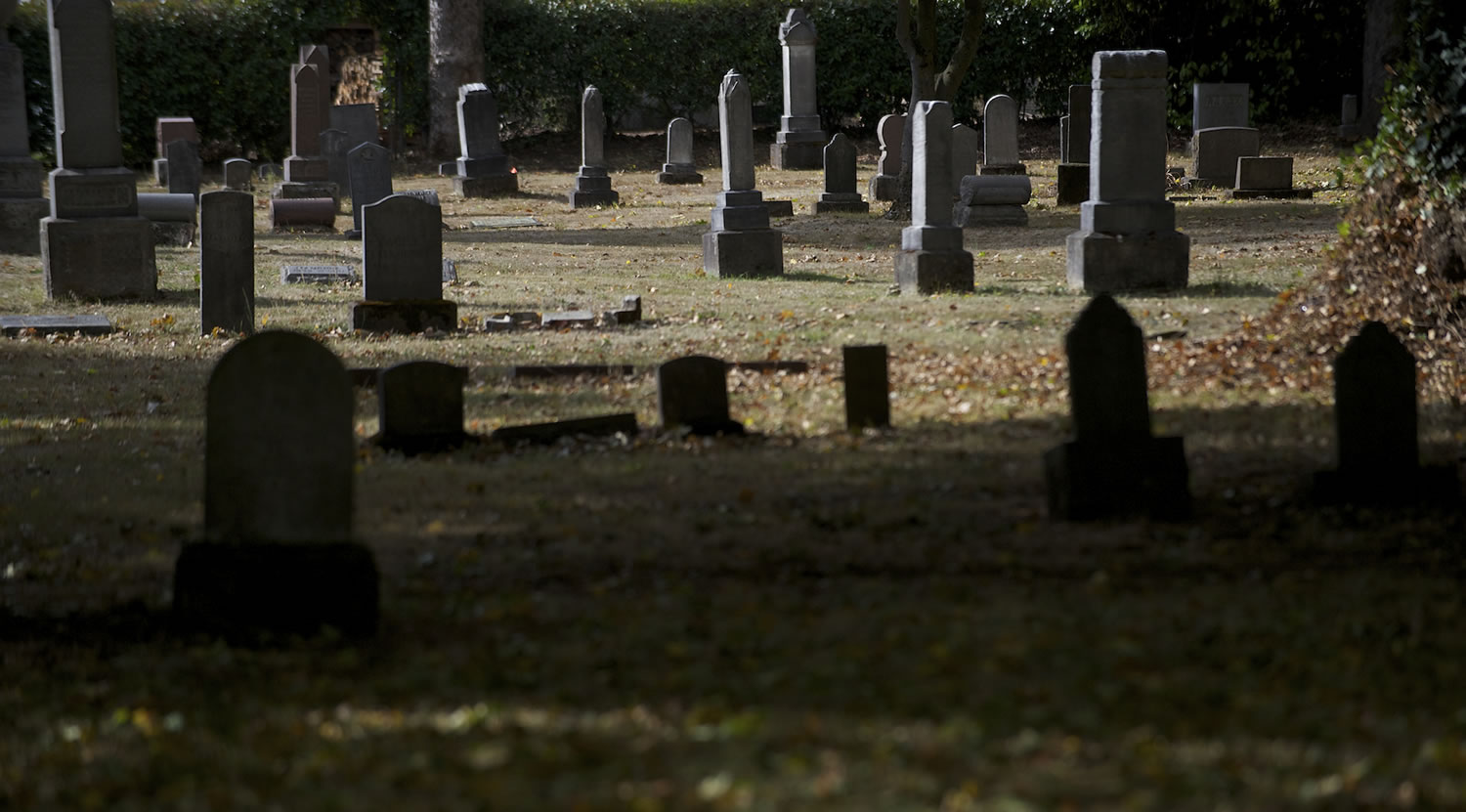o Cost: $5 per person, plus a canned food donation; children younger than 10 are free with an adult.
Vancouver’s Old City Cemetery has become a resource for college archaeology students during the past two summers. The different sizes and shapes of the stones, and the images carved on many of them, reflect the cultures of the people who buried the dead, a National Park Service archaeologist said.
Doug Wilson, who also is an adjunct professor of anthropology at Portland State University, oversees an annual summer field school at the Fort Vancouver National Historic Site. It gives college students some hands-on experience at an archaeological dig.
In 2011 and again this year, the summer sessions included work at the Old City Cemetery, where about 8,000 people are buried. The students examined how society treats death and burial, and how those patterns have changed over time.
“You can look at how people commemorate the dead,” Wilson said. “The taller monuments tend to be in the midst of the Victorian era, when there was almost a cult of commemoration.”
o Vancouver no longer sells grave plots at the Old City Cemetery; however, burials do occasionally take place there, at large family plots that were purchased years ago.
Some cemetery markers were inspired by ancient obelisks, similar in shape (if not size) to the Washington Monument. In the Georgian and Victorian eras, people often took their cues from designs of ancient Egypt, Greece and Rome, Wilson said.
Some of the gravestone imagery can reflect changing spiritual beliefs, particularly in cemeteries that have been around for a while. Wilson noted the work of archaeologist James Deetz, who researched cemeteries in New England. Early death’s-head images reflected a Puritan ethic that emphasized the mortality of man, with “the soul awaiting the second coming,” Wilson said.
o What: Vancouver Heritage Ambassadors Old Cemetery Tour.
o When: Friday and Saturday; 45-minute walks start about every 15 minutes from 5:30 to 7:15 p.m.
o Where: Southeast corner of the cemetery at Mill Plain and Grand boulevards; free parking at International Air and Hospitality Academy.
o Cost: $5 per person, plus a canned food donation; children younger than 10 are free with an adult.
Those grim gravestone emblems eventually gave
way to images of cherubs; they symbolized the soul separating from the body at the time of death and entering heaven, Wilson said.
Founded in 1867, the Vancouver cemetery at Mill Plain and Grand boulevards isn’t old enough to reflect that change. But a more recent transition can be observed. Less than a century ago, the markers and monuments started to scale down in size, Wilson said.
“As the Victorian era gave way to the modern, the students found that the larger monuments, obelisks, tablets, and large slanted markers gave way to smaller beveled, raised, and flush markers,” Wilson said.
The reason, according to other researchers, was a pair of events that killed people on a staggering scale — World War I, quickly followed by the influenza pandemic of 1918-1919.
But Wilson can add another theory to the discussion: as fancy monuments started to become more available, they became less prestigious.
“We even start to see mass-produced markers at the turn of the century and Sears Roebuck and Montgomery Wards sold grave markers through catalogs,” Wilson said.
Researchers have suggested that when something is no longer hard to acquire, the wealthy shift their attention to another hard-to-obtain commodity to differentiate them from the poor and middle class. So the democratization of the grave markers could have led to those changes, Wilson said.
In a cemetery that includes Civil War veterans, you sometimes can differentiate the Union soldiers from their former Confederate foes by looking at the tops of the gravestones. In 1873, U.S. military officials adopted a design for slabs of durable stone, with the top slightly curved. One example in the Old City Cemetery marks the grave of Thomas Thorns, musician, Company F, 25th New York Cavalry.
In 1906, Congress adopted a similar design for Confederate headstones. One difference: the top was pointed instead of rounded. According to one story, it prevented Yankees from sitting on the Confederates’ gravestones.
In addition to the social and cultural aspects of burials, the students’ project had a practical side: documenting and evaluating the condition of grave markers and monuments.
“The impetus was some horrendous vandalism a couple of years ago,” Wilson said.
Students have surveyed hundreds of grave markers, using forms to log data on inscriptions, material, design and condition. The forms lists different kinds of damage, including weathering, cratering, delamination, flaking and cracking.
The descriptions, as well as photographs, have been provided to the city of Vancouver, which owns and operates the cemetery. The information also has gone to the Clark County Genealogical Society and the Washington Department of Archaeology and Historic Preservation.
But there is another factor to cemetery preservation, Wilson said. What’s important are the individual stories of the people who were laid to rest at the area’s historical cemeteries.
“They deserve our highest levels of protection, not just because they hold a valuable source of heritage information, but because they are sacred to many people,” Wilson said.
“They deserve a reverent attitude to their space, and consideration for their future, so that they can continue to live in our community’s memory.”
Tom Vogt: 360-735-4558; http://www.twitter.com/col_history; tom.vogt@columbian.com.




